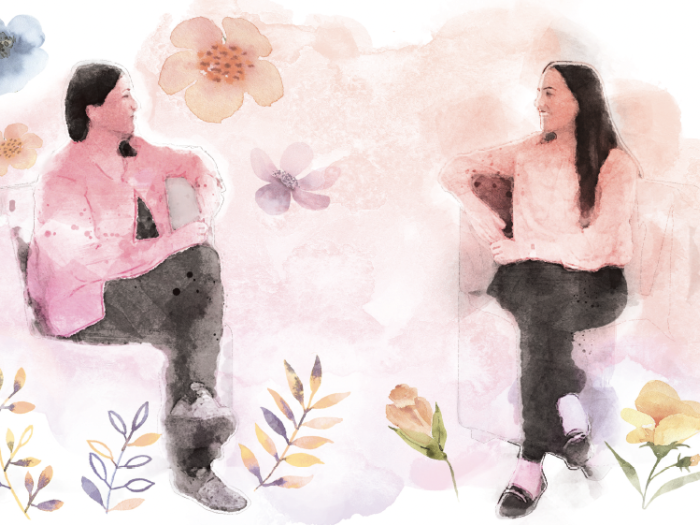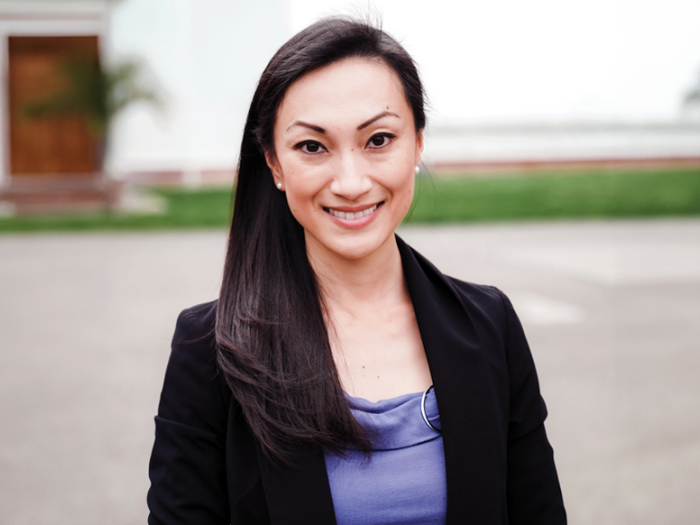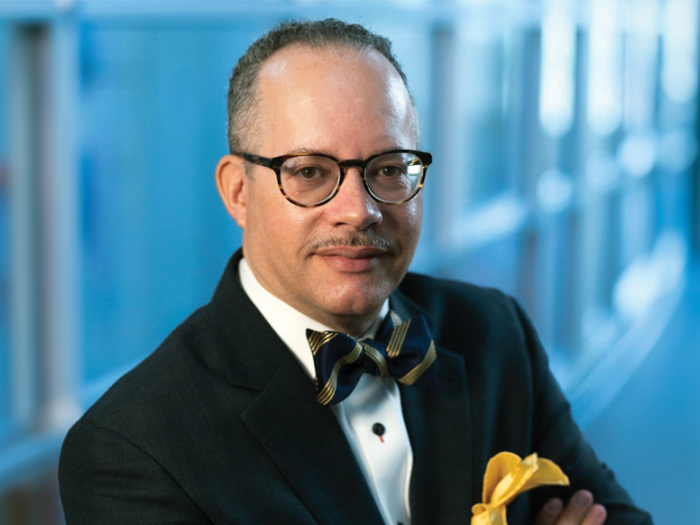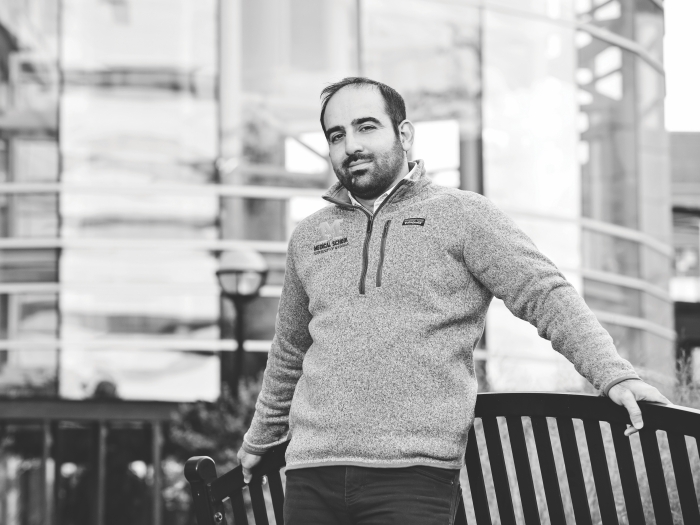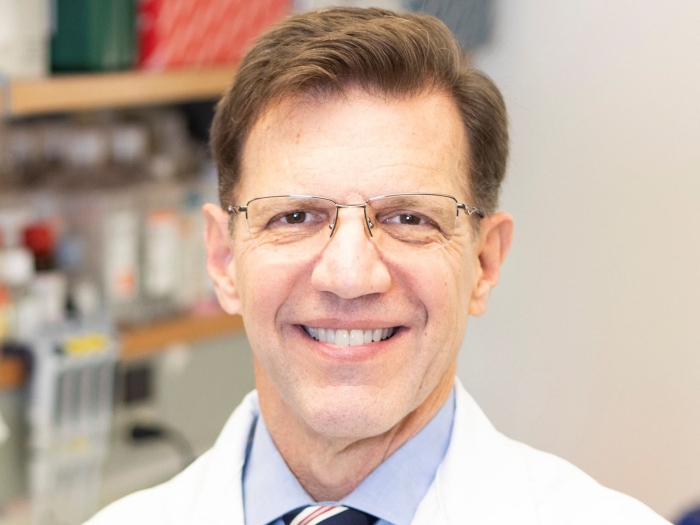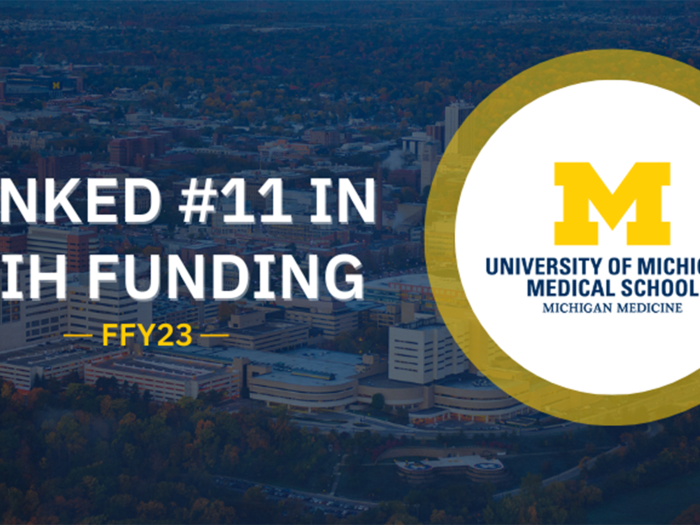
Caren Stalburg was walking down the halls of a hospital in Addis Ababa, Ethiopia, during an educational outreach trip in 2018. About to present to a group of learners, she was preoccupied with her thoughts — until someone called her name.
"Dr. Caren?" It was an Ethiopian doctor — one she didn't recognize — who seemed puzzled to see her wandering the hospital. Figuring this was someone from the learning cohort she had yet to meet, Stalburg nodded and politely responded with a "hi."
"Dr. Caren," the doctor exclaimed, "I'm taking your MOOC!"
A few years earlier, Stalburg (M.D. 1992, Residency 1996) had launched a massive open online course (MOOC) on health education and pedagogy titled Instructional Methods in Health Professions Education. Designed to bring educational theory to health professionals, the class has had over 47,000 enrollees since it was first introduced on the Coursera platform in 2013.
In Addis Ababa, thousands of miles from the U-M Medical School, she was meeting one of her online students face-to-face. It was an unimaginable coincidence — but it demonstrated exactly the kind of reach U-M and the Medical School want to achieve through MOOCs and online education.
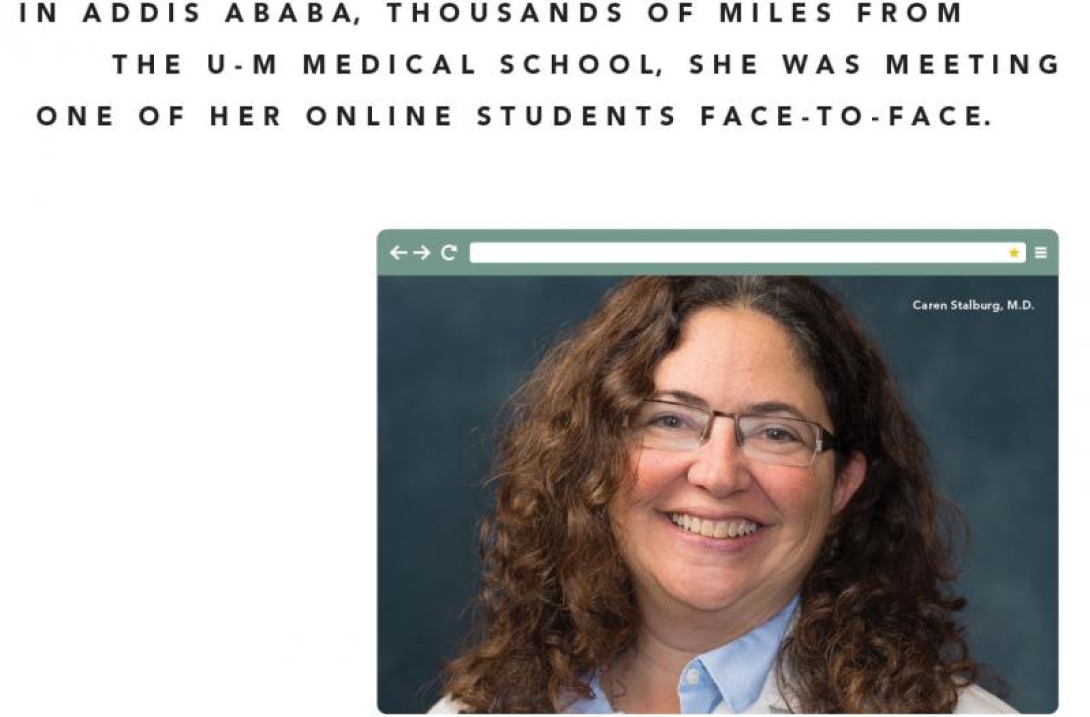
CONNECTING LEARNERS
MOOCs have been around, in one iteration or another, since 2006. They were first conceptualized as a means of connecting long-distance learners, the number of whom grew concomitantly with the expanse and ubiquity of the internet. After a humble beginning through RSS feeds, MOOCs have evolved and adapted, often employing leading-edge methods of presenting and disseminating information. To date, there are 81 million MOOC students enrolled in almost 10,000 courses, with over 800 participating universities.
Multiple platforms, among them Coursera and edX, have been developed to accommodate this new breed of classroom, but, overall, the concept remains the same: to offer knowledge and information, presented by accredited lecturers and teachers, to those who might not otherwise be able to access it. Many of these courses are free, and those that do cost money are decidedly less expensive than a full semester of college-level classes. Some even offer financial aid to those who need it.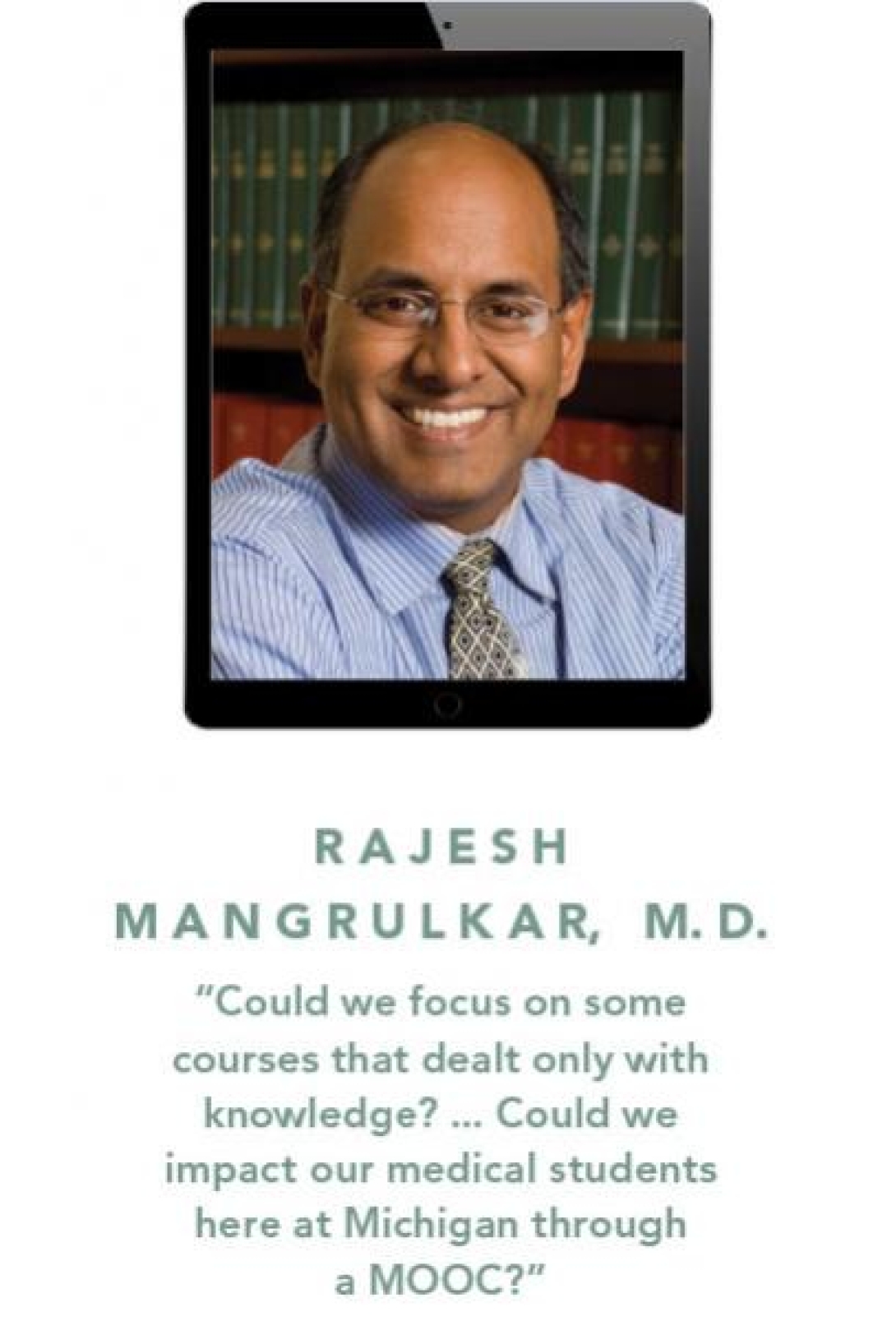
In spring 2012 — the "year of the MOOC," according to the New York Times — U-M joined the growing digital learning landscape, and Michigan Medicine was eager to try its hand.
"At the Medical School, we were first out of the gate across campus to call for a range of proposals from our faculty," says Rajesh Mangrulkar, M.D. (Residencies 1997 and 1998), the Marguerite S. Roll Professor of Medical Education, associate dean for medical student education, and associate professor of internal medicine and of learning health sciences.
Like all good scientists, the team that spearheaded the MOOC project approached it as an experiment, Mangrulkar explains. They weren't sure what to expect, or how, exactly, to translate the complexity of medical sciences to an easily digestible online experience. Mangrulkar recalls the questions that guided them: "Could we focus on some courses that dealt only with knowledge? Could we focus on some that had both knowledge and skills development? Could we look for proposals that had an international focus? With a range of medical content and teaching skills? Could we impact our medical students here at Michigan through a MOOC?"
MAKING A MOOC
After putting out the call for proposals, they received over 20 applications and eventually narrowed the total down to six pilot MOOCs. Following a kickoff meeting in January 2013, the Medical School was officially in the market of the MOOC, and various offices came together to help in this endeavor — including Michigan Medicine's Health Information Technology and Services (known at that time as Medical School Information Services), U-M's Center for Interprofessional Education, and the Office of Academic Innovation.
"We created the Office of Academic Innovation to foster a culture of innovation in learning across U-M's 19 colleges and schools," says James DeVaney, associate vice provost for academic innovation. "U-M occupies a unique institutional position at the intersection of really big, really good, and really public. Given our unique institutional strengths, we are driven to reimagine the great public research university — including broadening access to learners at all levels, creating a more personalized and inclusive model for residential learning, and providing a flexible and networked model for global and lifelong learning."
Although what goes into the creation of a MOOC differs depending on the subject material, the instructors do have some shared experiences — like learning how to be comfortable in front of a production team.
"The actual recording took the least amount of time, but, for me, was the most intimidating part of the process," says Kelli A. Sullivan, Ph.D., associate research scientist and lecturer of anatomical sciences. "The folks at Academic Innovation were great in helping me get over my camera shyness."
Sullivan, along with Kathleen Alsup, Ph.D., and Glenn M. Fox, Ph.D., both lecturers and curators in the Division of Anatomical Sciences, teach Anatomy, a grouping of four self-paced courses available through edX's XSeries program that launched in 2017 (as of January 2019, the series is also available as a specialization on Coursera). The lecturers team-teach Anatomy 403: Human Structure and Function at the Medical School, and the program "mirrors the topics covered in the course," says Alsup.
Stalburg, too, learned quickly that lecturing in front of a camera is a skill that one develops over time, and that it is quite different from a classroom setting. "It's much like being a newscaster or presenting on television: You have your slides and your script, and you're looking at a camera. One of the challenges is when you are giving your lecture, there are no people in the room; there's no feedback. So, for me, it was about looking at the camera and thinking about the people who were going to be listening on the other side. You try to make it conversational; you try to make it personal."
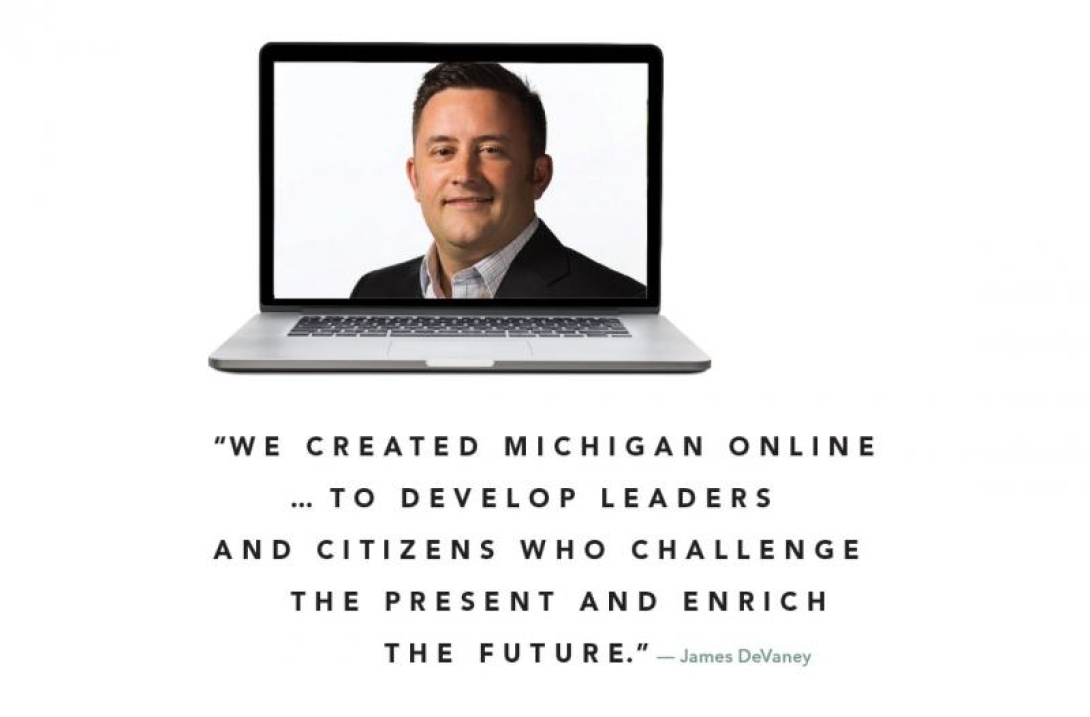
Beyond the camera work, the actual diffusion of information has to gel with the platform itself. In Stalburg's case, she had to consider things she never had previously — like whether or not an illustration was free to use under the Creative Commons license, since a large part of what makes MOOCs work is their ability to be open-access.
The Anatomy lecturers took a different approach to illustrations. After receiving an award from the Academic Innovation Fund, they were able to bring on an anatomical illustrator. "We felt that was very important to the success of the MOOC for two reasons: anatomy is a very visual subject and is difficult to conceptualize without excellent images, and we wanted to have resources that were not constricted by copyright to allow us to make these illustrations free for anyone's educational use," says Alsup.
Creating a MOOC invariably demands "months and months and months" of forethought, planning, and development, says Stalburg. And, sometimes, you have to account for things you would never expect. "Many people confuse MOOCs with online learning ... (but) they're not synonyms. Online learning has many of the same principles, but the thing about Coursera or edX is that it's about learning at scale, and the computer programs automate things in the background. At the beginning, if we didn't have the right set of parameters for the computer to identify, people might get the questions wrong, even though they said the right thing. It's just that the grading algorithm hadn't been programmed to pick up the language, so we had to do some adjustments there."
Fox agrees: "Designing a MOOC seemed so much more intentional than designing a traditional course. Having time in the classroom, you can pivot and adapt on the spot, but with a MOOC there is a greater delay from ideation to delivery." But, he adds, there are some unique advantages, like "being able to support U-M learners while magnifying your efforts for a worldwide audience."
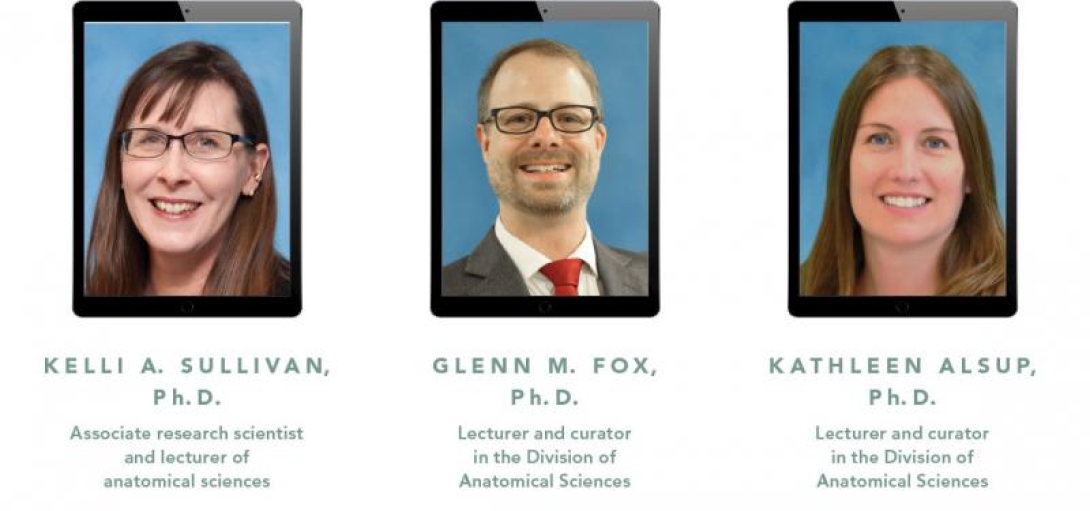
MICHIGAN ONLINE AND BEYOND
Both the health sciences education and anatomy MOOCs have become enormous successes. The Anatomy XSeries Program had 568 verified students and over 25,000 auditors after only one year on edX. Meanwhile, Stalburg's course is currently being used by Guyana's Ministry of Education for health system faculty development. That success has manifested in other interesting ways for Stalburg, too: She is often recognized in educational and medical settings. One former student, who enrolled in the class with her husband, was almost starstruck when Stalburg walked into a meeting. "I said, 'Let's send your husband a selfie,'" Stalburg laughs. "It's all very humbling, but that's the thing: It's so not about me. It's from an open educational resource standpoint, which is how I came into this space."
Mangrulkar, too, stresses the importance of accessibility, and feels certain that MOOCs are a preview of more dynamic learning curricula to come, both at the Medical School and around the world.
"I don't know what MOOCs will look like, but I wonder whether we (in medical education) will continue to have 'courses' in 10 years," he says. "The residential experience is going to be all about problem solving, teamwork, applied knowledge, mutual discovery — things that are far more active than lecturing, and require learners to come together. I think people are going to be getting knowledge and information in a variety of different ways, including MOOCs. The goal of the Medical School has to be about building on the knowledge in person, to develop the creative thinkers that we need to take that information and translate it into solutions."
No matter what shape MOOCs take in the coming years, U-M will continue to innovate, create, and adapt its programs to provide the best opportunities for students. In 2018, the Office of Academic Innovation officially launched Michigan Online, a robust fleet of Michigan faculty-led MOOCs, many of which are free to alumni, students, faculty, and staff at all three U-M campuses. In addition to free certificates, learners can explore opportunities on Michigan Online to earn U-M credits and, beginning in fall 2019, even complete an online master's degree.
"We created Michigan Online to broaden the impact of U-M's mission to develop leaders and citizens who challenge the present and enrich the future," DeVaney says. "By inviting students, faculty, staff, alumni, and learners around the world to take advantage of this unique opportunity to learn from U-M experts and each other, we are deepening our commitment to quality learning at scale. Through Michigan Online, we aim to better understand and meet the lifelong and lifewide learning needs of our growing U-M community."
Health MOOCs by U-M Faculty.
Find out more at ai.umich.edu/portfolio
ANATOMY XSERIES AND SPECIALIZATION: COMPREHENSIVE STUDY OF FUNCTIONS BETWEEN THE MAJOR ORGAN SYSTEMS
INJURY PREVENTION FOR CHILDREN AND TEENS: PROACTIVE APPROACH TO INJURY PREVENTION
INSTRUCTIONAL METHODS IN HEALTH PROFESSIONS EDUCATION: GROWING A COMMUNITY OF EDUCATORS*
UNDERSTANDING AND IMPROVING U.S. HEALTHCARE: U-M STUDENTS CONNECTED ACROSS SCHOOLS AND CAMPUSES*
INTRODUCTION TO CATARACT SURGERY: PREPPING STUDENTS FOR THE O.R.*
SLEEP: NEUROBIOLOGY, MEDICINE, AND SOCIETY: UP-TO-DATE INFORMATION ON THE MANY ASPECTS OF SLEEP*
THORACIC ONCOLOGY: MODERN LUNG CANCER DIAGNOSIS AND CARE
ADVANCED SEARCHING IN THE HEALTH SCIENCES: FUNDAMENTAL COMPONENTS OF ADVANCED LITERATURE SEARCHES
BREAST DENSITY NOTIFICATION: MODULAR LEARNING AND RESOURCES FOR PCPs
TEACHING AND ASSESSING CLINICAL SKILLS: OBTAIN, EXPAND, AND IMPROVE SKILLS*
* The original group of pilot MOOCs funded after the Medical School's 2013 call for proposals.
